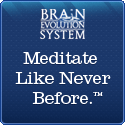Your Brain
Your brain isn’t just a grey mass where your memory reside in your head waiting to learn something new. Your mind is continuously making connections, forming new thoughts and processes, creating new neurons that either reinforce your old habits (behaviours) or the development of new ones.
It was once thought that the brain stopped producing new brain cells early in its development. And presumably brain power dimmed as cells died over the years
But in the past decade, researchers have found definitive evidence that the brain continues to generate new brain cells throughout life. Studies indicate that challenging environments, which include a number of components, such as pumped-up learning opportunities, social interactions and physical activities, are key to boosting the growth of new brain cells.
We can keep our brains healthy by entering into new situations, new games, and new social group activities. And if we can keep learning new things, and engage in physical activities, we can continue growing new brain cells.
Your brain is the only thing that can keep you healthy and happy. The brain is capable of being trained and physically modified in ways few people can imagine.
Our ability to think and reason, our level of education, and the exposure we receive to outside input on a daily basis affects our entire environment, but especially our health.
So give yourself the space each day to train your brain. It works.
Let’s face it you either use it or you will certainly lose it! And the mind is a terrible thing to waste.
The good news is that you’re never too old to start boosting your brainpower, and it can be fun, You can gain years of life that could otherwise be lost.
Get started now, and keep challenging your brain. It’s worth the effort.
Meditation
At-home Meditation
At-home meditation is the most convenient place to do meditation but it also is an environment that can introduce the most distractions. Brainwave entrainment products and other tips and techniques can help you stay focused.
Sleep
The biggest challenge for many of us is trying not to fall asleep during meditation. The best time to do meditation is after a few hours of sleep. It is no fun dozing off just as you see a tunnel that you believe is your escape into the astral world. You had planned on flying over ancient Greece and maybe even dropping in on a lecture by Plato but instead you are deep in a dream state and being chased by dragons. To avoid sleep, find the right time of day for you to practice meditation.
The mind is often the most at peace during early morning before the stresses of the day set in. Meditating with the sunrise is always a serene experience. An early meditation also helps you turn on a positive state and take on the world during the day with a positive mindset.
Brainwave entrainment products are one of the most effective ways of introducing discipline to at-home meditation. If you do start to fall asleep, a change in tone will often return you to a state of wakefulness. Many meditators do reality checks, especially those who engage in astral travel and lucid dreaming.
Most of us are less ambitious. We are focused on achieving a state of deep relaxation and entering the hypnogogic state between wakefulness and dreaming. Reality checks are useful at all stages of meditation. From time to time, press your thumb into the palm of your hand, or employ whatever reality check you choose.
Discipline
Most meditators find that the mind will wander more easily at home then in a more structured guided meditation class. Even experienced meditators appreciate doing guided meditation from time to time. There are many meditation recordings and brainwave entrainment products to keep your at-home meditation on track. Maintaining a regular daily meditation schedule will help you make the required adjustments to ensure the best meditation experience.
Place and Position
It is best to create one special place for meditation in your home environment. You will come to associate this place with a relaxed, tranquil meditative state and your state will begin to shift as soon as you enter the room. Be creative. Build a Buddhist alter if you so desire with icons that are meaningful to you. Or perhaps you want to recreate your favorite meadow land from childhood in your garden.
At-home meditation should be comfortable but not too cozy. Do not try and do meditation in your favorite lounge chair or hammock in the backyard. Your spine should be straight, allowing energy to flow up through the energy channels aligned with the chakras.
Do not confine your meditation practice to one place and one time during the day. You can take your at-home meditation with you during the day. When you reach a meditation state you like, anchor it. An anchor is any physical stimulus you choose. It may be as simple as touching your thumb and baby finger together.
The next time you are stressed out by a work task – before leading a team meeting or delivering a speech, for example – call up your anchor, relax, smile and remind yourself that you are going to do great.





